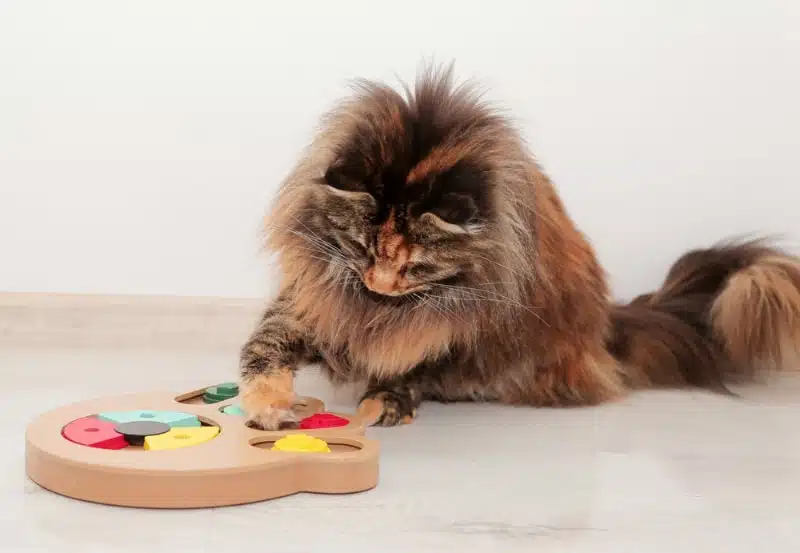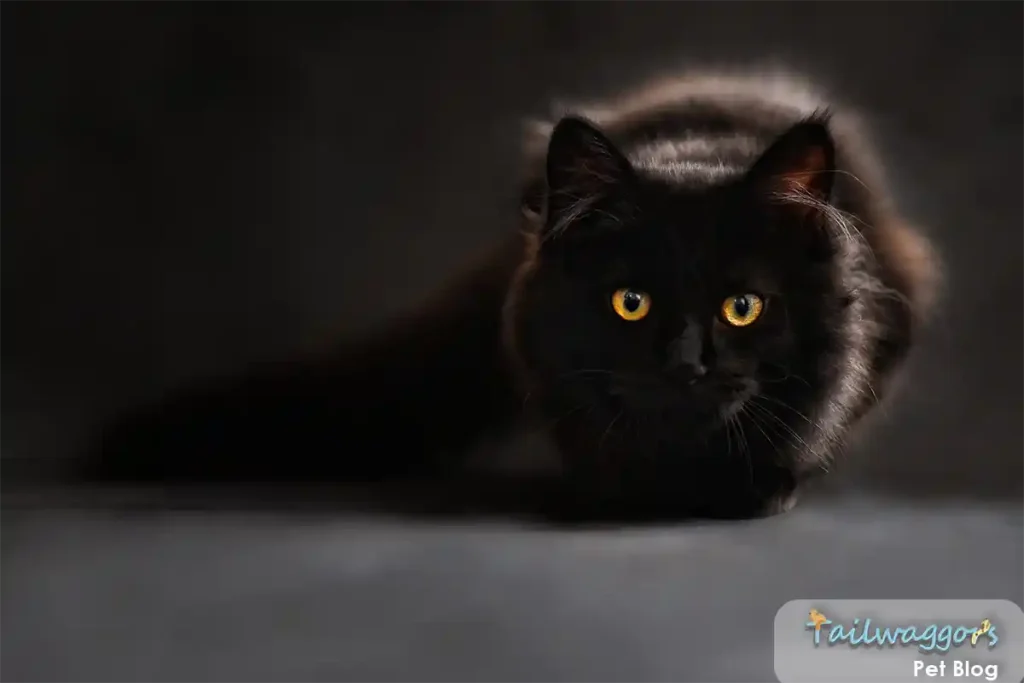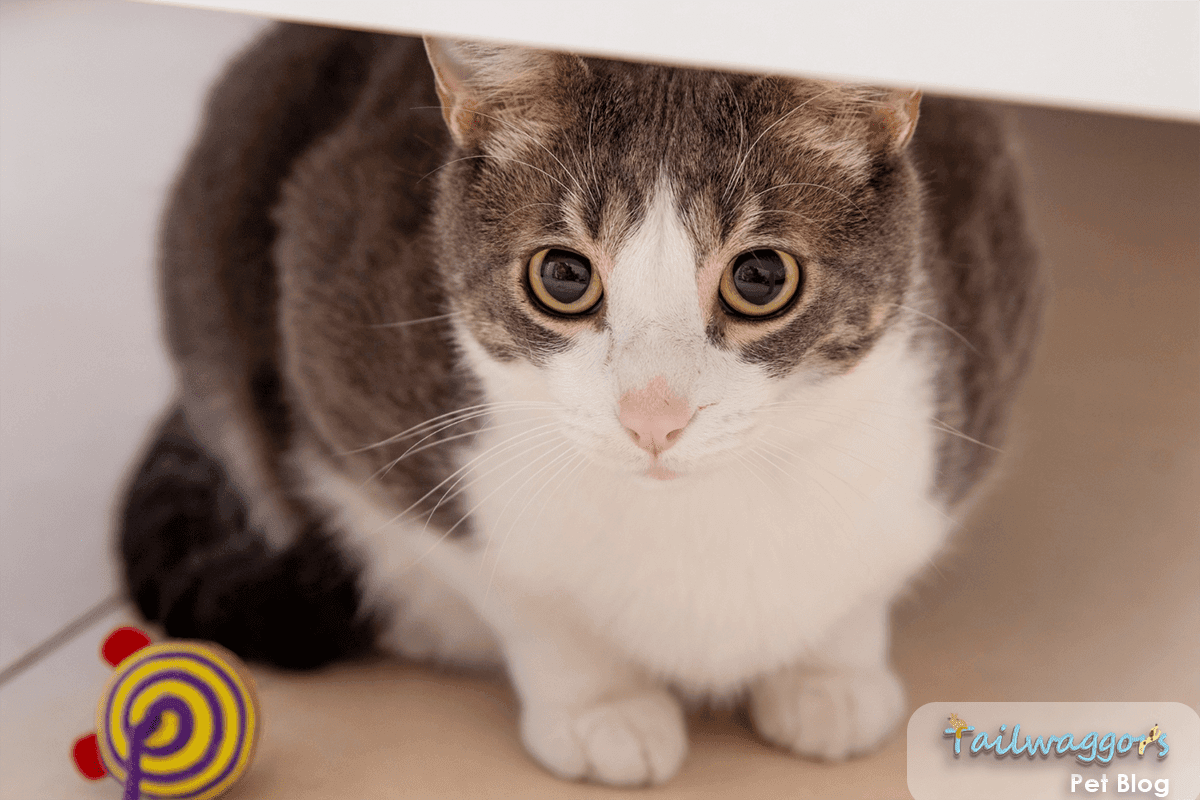Feline anxiety is a complex and multifaceted issue that can significantly impact a cat’s physical and emotional well-being. Recent studies, including those by Thompson et al. (2023), reveal that nearly 40% of cats exhibit anxiety-related behaviors at some point in their lives. Understanding the root causes and manifestations of this condition is crucial for improving your cat’s quality of life and strengthening the human-animal bond.
As a veterinarian with over nine years of experience, I, Dr. Esther Knoetze, have encountered numerous cases where early identification and management of feline anxiety significantly improved the well-being of cats and their owners.
Discover how different breeds may respond to stressors in How Many Cat Breeds: A Complete Guide to Choosing the Perfect Breed.
What Triggers Anxiety in Cats?
Cats are creatures of habit and thrive in stable environments. Any disruption to their routine or surroundings can trigger anxiety. Based on my clinical experience, the most common triggers I’ve observed include household changes, loud noises, and social stressors in multi-cat households. Common causes include:
- Environmental Changes: Moving to a new home, introducing new pets, or loud noises like fireworks.
- Lack of Stimulation: Insufficient opportunities for play or exploration can lead to boredom-induced stress.
- Social Dynamics: Multi-cat households often face territorial disputes, which can heighten anxiety.
- Health Issues: Chronic pain, illness, or aging can exacerbate anxiety symptoms (Anderson et al., 2023).
Additionally, cats can develop situational anxiety due to specific stressors such as vet visits or unfamiliar visitors. These scenarios often elicit acute stress responses that may escalate if left unaddressed.
Explore safety measures for a new environment in The Complete Guide to Cat Proofing Your Home: Vet-Approved Safety Solutions.
How Does Anxiety Manifest?
Anxiety in cats often presents through subtle behavioral and physical changes. As a veterinary professional, I advise monitoring for behavioral symptoms like excessive grooming or vocalization, as these are early indicators of stress. Key signs include:
- Behavioral Symptoms:
- Excessive grooming, leading to bald patches (PetMD, 2022).
- Increased vocalization, such as yowling or crying.
- Aggression or withdrawal from social interaction.
- Physical Symptoms:
- Loss of appetite or overeating.
- Elimination outside the litter box.
- Frequent hiding or seeking elevated spaces.
Other subtle indicators of anxiety include dilated pupils, crouched postures, and rapid tail flicking, all of which signify distress in cats.
The Physiology of Feline Anxiety
Anxiety in cats activates the hypothalamic-pituitary-adrenal (HPA) axis, leading to elevated cortisol levels. Chronic stress can weaken the immune system, making cats more susceptible to illness. Veterinary studies and my clinical practice confirm that prolonged stress elevates cortisol levels, leading to compromised immunity and increased susceptibility to infections (Roberts & Chen, 2023). Understanding this physiological response is essential for addressing both the root cause and its effects.

Evidence-Based Strategies for Anxiety Management
Managing feline anxiety requires a multifaceted approach that addresses both the symptoms and underlying causes. Below are practical, evidence-based strategies to help reduce stress and promote a sense of security for your cat.
1. Environmental Enrichment
Creating a safe, stimulating, and predictable environment is crucial for reducing anxiety. In my practice, environmental enrichment strategies like adding vertical spaces and safe zones have significantly reduced anxiety in stressed cats. Key components include:
- Vertical Space:
- Install cat trees or shelves to provide perching areas (Wilson et al., 2023).
- Ensure access to windows for natural light and outside views.
- Safe Zones:
- Designate quiet retreat areas with comfortable bedding.
- Provide hiding spaces, such as covered boxes or tunnels.
- Interactive Play:
- Schedule daily play sessions using prey-mimicking toys.
- Incorporate puzzle feeders to engage your cat’s mind.
For cats that seem overstimulated, creating low-traffic zones or quiet spaces can help reduce external stressors.
2. Pheromone Therapy
Synthetic pheromones mimic the natural calming signals cats use to communicate. I recommend pheromone diffusers to clients as part of a multi-modal management plan, often observing a noticeable reduction in anxiety symptoms within weeks. Consider:
- Installing diffusers in common areas.
- Spraying pheromones on bedding or transport carriers.
Learn how calming aids compare in CBD Oil for Cats: Unlocking Serenity or Not?.
3. Behavioral Modification Techniques
Behavioral therapy can help cats associate positive outcomes with previously stressful situations. Effective techniques include:
- Positive Reinforcement:
- Reward calm behavior with treats or praise.
- Use toys to distract from triggers.
- Gradual Desensitization:
- Slowly expose your cat to anxiety-inducing stimuli in controlled settings.
- Pair exposure with positive rewards.
4. Social Dynamics Management
For multi-cat households, proper resource distribution can reduce tension and prevent inter-cat aggression. Ensure:
- Multiple feeding stations and water bowls.
- Separate litter boxes (one per cat, plus one extra).
- Individual resting areas to avoid territorial disputes.
For households with multiple cats, I recommend creating individualized play routines to reduce competition and build trust between pets.
Multi-cat households might benefit from insights shared in The Abyssinian Cat: Health and Harmony.

Special Considerations for Different Cat Populations
1. Senior Cats
Older cats are more prone to anxiety due to age-related changes, including cognitive decline and sensory impairments. From my experience, senior cats benefit greatly from tailored interventions, such as low-sided litter boxes and nutrient-enriched diets to support cognitive health (Thompson & Lee, 2023). To help senior cats:
- Modify Their Environment:
- Provide easy access to favorite resting spots by adding ramps or steps.
- Ensure litter boxes are low-sided for easier entry.
- Adjust Exercise and Play:
- Use gentle, low-impact toys to encourage physical activity.
- Incorporate brain-stimulating activities like treat puzzles.
- Dietary Support:
- Consider diets formulated for senior cats with added nutrients to support brain health, such as antioxidants and omega-3 fatty acids.
Learn how diet plays a role in anxiety with Abyssinian Cat Diet (2024): Evidence-Based Veterinary Guide.
2. Multi-Cat Households
Cats living in multi-cat environments often face additional stressors due to territorial disputes and resource competition. To maintain harmony:
- Territory Management:
- Increase vertical and horizontal space to reduce competition.
- Use pheromone diffusers in areas of high interaction to promote calm.
- Resource Multiplication:
- Ensure there are multiple food, water, and litterbox stations.
- Provide individualized attention and playtime for each cat.
- Observation:
- Watch for signs of inter-cat aggression or resource guarding, and address these behaviors promptly with environmental adjustments or professional advice.
3. Rescue or Shelter Cats
Cats adopted from shelters often come with a history of trauma or neglect. Easing their transition into a new home is crucial to reducing anxiety:
- Gradual Introduction:
- Introduce them to their new environment one room at a time.
- Use scent-swapping techniques before introducing them to other pets or family members.
- Consistency:
- Establish a predictable daily routine for feeding, playtime, and rest to create a sense of security.
- Trust-Building Activities:
- Engage in interactive play and reward positive behaviors with treats and gentle praise.
For traumatized cats, consistent routines and calm environments help rebuild trust and minimize stress responses.
For more on trauma and safety, read Prevent Cat Poisonings: Essential Tips and Emergency Advice.
4. Cats with Medical Conditions
Cats with chronic illnesses or disabilities may experience heightened anxiety due to physical discomfort or changes in their routine. To address these needs:
- Pain Management:
- Work with your veterinarian to ensure effective pain relief for conditions like arthritis or dental disease.
- Environmental Adaptations:
- Provide ramps, padded bedding, and easy access to essentials like food and water.
- Regular Monitoring:
- Schedule consistent veterinary check-ups to manage their condition and ensure anxiety is not exacerbated by untreated symptoms.
5. Kittens and Young Cats
Younger cats may also experience anxiety as they adapt to new environments and learn social cues. To support them:
- Socialization:
- Expose kittens to various environments, people, and experiences early in a controlled and positive manner.
- Play-Based Learning:
- Use interactive toys to teach appropriate behaviors and build their confidence.
- Routine Establishment:
- Create consistent feeding and play schedules to provide a sense of structure.

FAQs on Feline Anxiety
1. Can anxiety in cats be cured completely?
+While anxiety may not always be cured entirely, it can be effectively managed with a combination of environmental adjustments, behavioral therapy, and, in some cases, medical interventions. A consistent approach tailored to your cat’s needs is key.
2. What are natural remedies for cat anxiety?
+Natural remedies include pheromone diffusers, herbal supplements like valerian root or chamomile, and engaging your cat in regular play to reduce stress. Ensure that any supplements are veterinarian-approved before use.
Find out more about keeping your cat calm naturally in Toxic Plants for Cats: A Comprehensive Reference Guide.
3. How can I introduce a new pet to an anxious cat?
+Introducing a new pet requires patience and gradual steps. Start by keeping the new pet in a separate area and allowing scent swapping through items like blankets. Gradually increase controlled interactions, rewarding calm behavior with treats and praise.
4. When should I seek professional help for my cat’s anxiety?
+Seek veterinary advice if your cat shows persistent anxiety symptoms, such as aggression, refusal to eat, or excessive grooming, that do not improve with home interventions. Early intervention can prevent these behaviors from becoming ingrained.
Find out more about keeping your cat calm naturally in Toxic Plants for Cats: A Comprehensive Reference Guide.
Conclusion
Feline anxiety is a manageable condition when approached with a combination of understanding, evidence-based strategies, and veterinary support. By recognizing the triggers and symptoms of anxiety, you can take proactive steps to create a calming environment tailored to your cat’s unique needs. Whether through environmental enrichment, behavioral modification, or professional interventions, helping your cat overcome anxiety fosters a healthier and happier life for both of you.
For personalized guidance, consult a trusted veterinarian to ensure your feline companion receives the best care possible.
Discover the world of feline anxiety—an important topic for every cat owner! 🐾
✨ Learn about the triggers, signs, and effective strategies to help your cat live a stress-free life.
Share with your fellow cat lovers and hear what they say 🐱❤️











